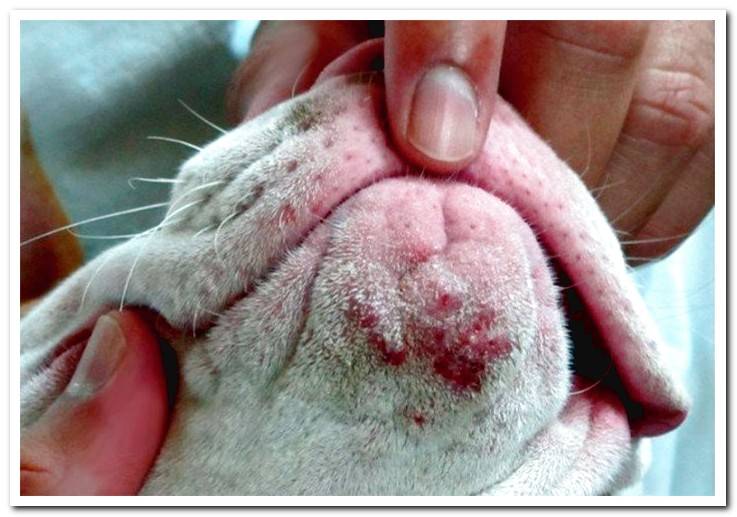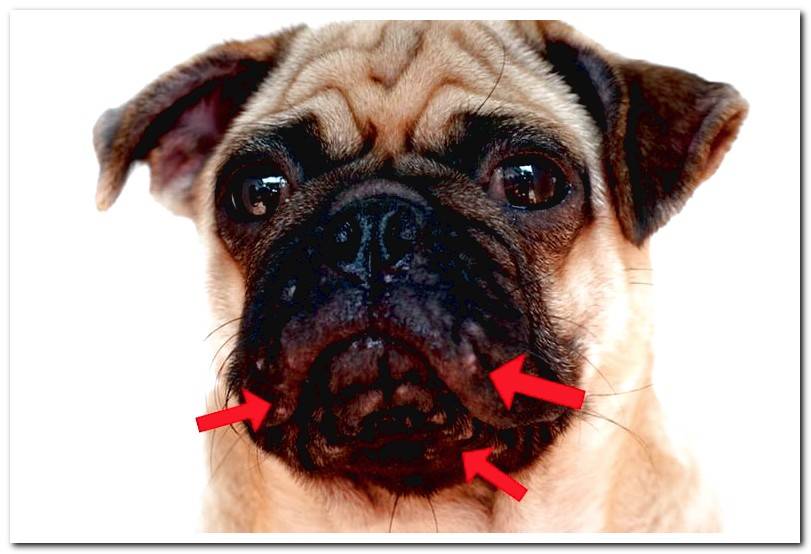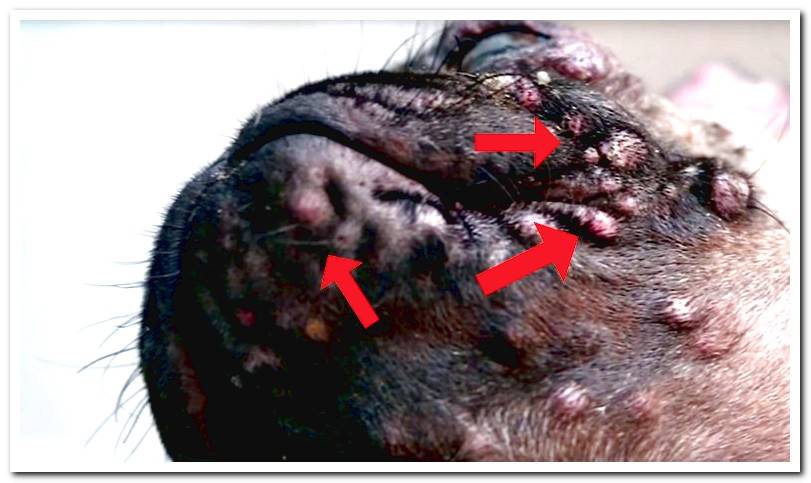
Like people, dogs can develop acne during puberty. This stage occurs between three and eight months of age, at which time acne may appear and, in most cases, it will disappear when the dog reaches adulthood.
Canine acne is a fairly common condition, and generally affects the dog’s lips and chin. The cases can vary from mild to severe and it is important that we know how to recognize their signs to go to the vet if they occur.
Below, we explain why canine acne occurs, how to identify it and what is its treatment.
Index of contents
- 1 What is canine acne?
- 2 Why canine acne occurs?
- 3 Which breeds are most predisposed to canine acne?
- 4 What symptoms does canine acne produce?
- 5 How is canine acne diagnosed?
- 6 How is canine acne treated?
- 7 What is the prognosis for canine acne?
- 8 What can we do at home to improve our dog’s acne?
What is canine acne?
Canine acne It is an inflammatory skin disorder, which affects the hair follicles and the dermis mainly in the areas of the chin and lips of the dog.. Its presentation is similar to that of human acne.
In mild cases of canine acne, red bumps (papules) or purulent content (pustules) appear on the skin. In more severe cases, more widespread inflammation of the dermis of the lips and muzzle may occur, which is usually painful. Severe cases of canine acne can cause permanent scarring if not treated properly.
Why canine acne occurs?
What happens in cases of canine acne is that the hair follicles become inflamed and can break. This inflammation It can occur for different causes, such as microtrauma in the muzzle area or disorders in the production of sebum or keratin in the follicles.
When the hair follicle breaks, its contents are released and this causes an inflammatory reaction of the surrounding skin (peripheral), since the content of the follicles is recognized as foreign by the surrounding tissues. Initially, the inflammation associated with canine acne is sterile (uninfected), but it is common for bacteria to easily colonize this damaged skin and cause a secondary infection.
Initially, the appearance of canine acne was mainly associated with hormonal factors, but recently it is believed that genetic predisposition plays a greater role.

Which breeds are most predisposed to canine acne?
Canine acne is a skin disorder that almost exclusively affects short-haired dogs, and the most commonly affected breeds are: Boxer, Doberman pinscher, English Bulldog, Great Dane, Weimaraner, Mastiff, Rottweiler, and Kurzhaar.
What symptoms does canine acne produce?
The most common symptoms seen in dogs with canine acne are:
- Appearance of red bumps (papules), which can develop a purulent content (pustules), mainly on the skin of the lips and chin.
- Presence of itching / pain in the affected area : Animals may not feel uncomfortable if the lesions are very small, but pain and slight itching are common. The dog will attempt to scratch and may rub against objects or walls.
- Appearance of wounds and scabs, secondary to scratching.
How is canine acne diagnosed?
In most cases, the appearance of the lesions is sufficient for the veterinaryn to reach his diagnosis, since the skin disorders distributed around the lips and muzzle are relatively specific to this condition.
However, in some cases the veterinaryn can establish the need for additional tests :
- Skin biopsy – Confirms acne diagnosis and rules out other skin disorders.
- Bacterial culture in case of infection : Identifies the bacteria responsible for the infection and allows establishing the appropriate antibiotics for treatment.
How is canine acne treated?
Treatment is aimed at avoiding secondary infections or treating them by reducing inflammation and discomfort.
- Topical treatment : the affected area should be cleaned and disinfected daily (2-3 times / days) with a disinfecting solution (chlorhexidine); in some cases more intense treatment with benzoyl peroxide is necessary. Antibiotic ointments (mupirocin) may be necessary.
- Systemic treatment : in severe cases, it is necessary, in addition to topical cleanings, to add general medication (oral route) of antibiotic and anti-inflammatory until the process is controlled.

What is the prognosis for canine acne?
Canine acne it is usually a temporary alteration that is resolved when the dog reaches adulthood ; therefore, the prognosis is good, provided that the necessary measures are taken to prevent and control possible secondary infections.
What can we do at home to improve our dog’s acne?
In addition to strictly complying with the treatment prescribed by the veterinaryn, at home we must follow the following recommendations to promote healing of the process :
- Cleaning the environment : Daily cleaning of our dog’s skin is an essential part of veterinary treatment, but we must also keep its environment clean to avoid possible sources of infection (rest bed, toys, feeders and drinkers …)
- Avoid trauma to the affected area : If we reduce trauma to the muzzle and chin area of the dog, we will improve its acne. Possible causes of trauma can be eating from a plastic container that has rough edges, scratching the face with the legs or rubbing against objects in the house, that we squeeze the injuries (pop pimples) … Squeezing our dog’s injuries will increase the chance of hair follicles breaking and inflammation will get worse.
Following the treatment prescribed by the veterinaryn and keeping these measures at home, we will manage to control our dog’s acne until it reaches adulthood, at which point the process usually subsides on its own.
